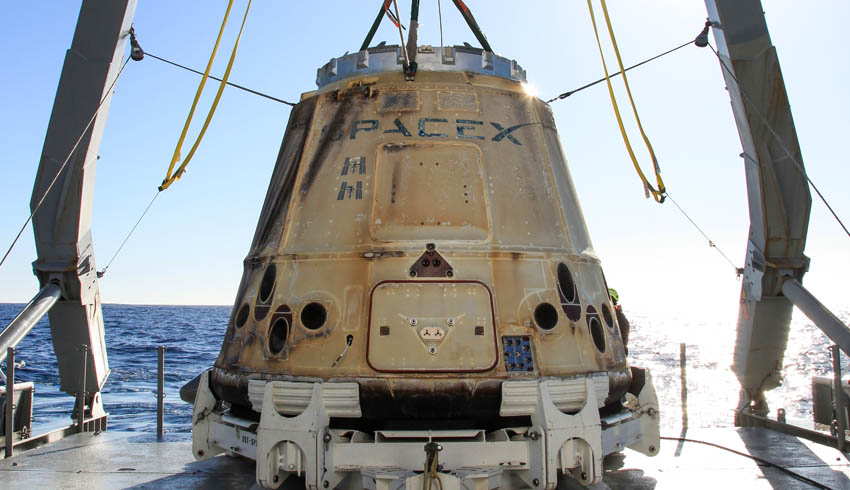
Packed with about 3,800 pounds (7,723 kilograms) of cargo and science, SpaceX’s Dragon spacecraft departed the International Space Station on Tuesday, 7 January. A parachute-assisted splashdown in the Pacific Ocean occurred that morning just west of Baja California.
A recovery team then secured Dragon on a boat for the return trip to the Port of Los Angeles, wrapping up SpaceX’s 19th resupply mission to the space station.
Filled with approximately 5,700 pounds (2,585 kilograms) of supplies and payloads, Dragon launched aboard a Falcon 9 rocket on 5 December 2019 from Cape Canaveral Air Force Station in Florida and arrived at the space station on 8 December.
The Dragon spacecraft supporting the CRS-19 mission previously supported the CRS-4 mission in September 2014 and the CRS-11 mission in June 2017.
Dragon is the only spacecraft currently flying that is capable of returning significant amounts of cargo to Earth.
Dragon is a free-flying spacecraft designed to deliver both cargo and people to orbiting destinations. It is the only spacecraft currently flying that is capable of returning significant amounts of cargo to Earth.
Currently Dragon carries cargo to space, but it was designed from the beginning to carry humans. The first demonstration flight under NASA's Commercial Crew Program launched on 2 March 2019 at 6:49pm AEDT.
The Dragon spacecraft successfully docked with the space station ahead of schedule at 10:02pm AEDT on 3 March 2019, becoming the first American spacecraft in history to autonomously dock with the International Space Station.
The Dragon spacecraft is capable of carrying up to seven passengers to and from Earth orbit, and beyond. The pressurised section of the capsule is designed to carry both people and environmentally sensitive cargo.
Towards the base of the capsule and contained within the nose cone are the Draco thrusters, which allow for orbital manoeuvring.
Dragon’s trunk not only carries unpressurised cargo but also supports the spacecraft during ascent. The trunk remains attached to Dragon until shortly before re-entry into Earth’s atmosphere.
Receive the latest developments and updates on Australia’s space industry direct to your inbox. Subscribe today to Space Connect here.









